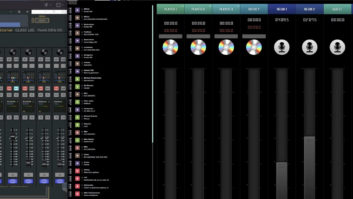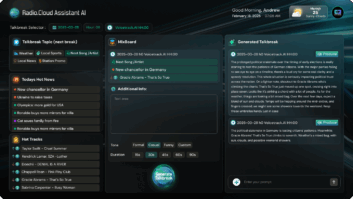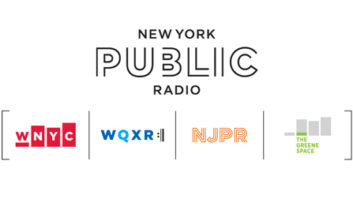A Radio World ebook focuses on how the cloud increasingly is integrated in radio broadcast workflows. This interview is excerpted from the ebook.
Christopher Bell is a strategy and business development leader at Amazon Web Services, focused on audio-first media and entertainment customers. He is a 30-year M&E veteran with past leadership roles at Warner Music, Universal Music, and Sony DADC.
Radio World: To what extent has cloud-based content creation and delivery been deployed by radio organizations so far?
Christopher Bell: Globally, we’re moving from the early adoption of cloud solutions for broadcast and streaming radio into the planning and execution of comprehensive migrations for essential operations.

The need to define a “station of the future” is a common refrain, and cloud-based, centrally managed solutions are enabling networks to meet those goals.
Many are leveraging services like Amazon Simple Storage Service for storing content and archives, AWS Lambda for highly scalable serverless audio processing on-demand, and Amazon Bedrock for access to a wide selection of Generative AI foundation models for different use cases.
Most important: The cloud is central to many station and network operations today. This is not a future prospect, but a current reality.
A good opportunity to see this in action was the live cloud-based radio instance AWS operated at the NAB Show with partner Radio.Cloud as shown in the AWS booth. A walk-through of that configuration is available here.
RW: What are the primary drivers you’re seeing for stations and networks adopting cloud solutions?
Bell: Faster access to innovation, system resilience, security and cost efficiencies are all drivers of adopting cloud radio solutions. As network operators face the prospect of upgrading and replacing often heterogenous on-premises solutions at multiple station locations, cloud alternatives allow for standardization on solutions that allow staff to focus on programming and content instead of server maintenance, security patching, data and content security, and other undifferentiated heavy lifting.
RW: Can you expand on the key advantages of such solutions compared to traditional on-premises systems?
Bell: Radio broadcasters can focus more on content and programming, supporting their advertisers with modern monetization strategies, and attract operations talent from a larger pool of skilled engineers when they adopt cloud solutions. Network operators can better share cloud-based content and data across stations and can more easily find and use content from past productions when it’s contained in unified archives and tagged consistently by automated processing that’s easy to deploy in the cloud.

RW: How are you ensuring the security and reliability of your cloud infrastructure for mission-critical radio operations?
Bell: Security and reliability is built into AWS, from the core infrastructure up through the services used by customers and partners building radio and other audio-focused solutions, and we provide in-depth guidance around ensuring security and reliability with the use of those services. Partners also have their solutions evaluated for their adherence to the six pillars of the AWS well-architected guidelines: operational excellence, security, reliability, performance efficiency, cost optimization and sustainability.
RW: What emerging technologies or trends do you see having the biggest impact on the radio industry in the coming years?
Bell: Two AWS features that have accelerated the growth of radio- and audio-focused solutions are the options for use-case specific AI foundational model adoption and highly scalable and cost-efficient serverless tools for data and content processing. We have multiple partners leveraging the Amazon Bedrock Generative AI managed service to access different foundation models matched to specific use cases like summarization, metadata generation, script writing, story selection and more.
When preparing drop-in audio like weather and traffic updates at fixed schedule times, operators used to have to have processing capacity ready for those highly spiky workloads even though it mostly sat idle each hour. Now, with serverless architectures built with Amazon Eventbridge and AWS Lambda, operators have access to immediate scale capacity at much lower cost and higher reliability.

RW: How do you see cloud technology affecting the future of radio content creation, distribution and monetization?
Bell: As we’ve seen in other areas of media and entertainment, cloud adoption accelerates both service and operations productivity and allows broadcasters and streamers to draw from a larger pool of creators without location limitation. Radio advertising is highly effective but is often disfavored relative to digital options because of the differences in how data on effectiveness of campaigns is collected and the ease of placing spots.
Cloud-based solutions make it easier to adopt modern data strategies, integrate offerings that include both broadcast and streaming audio in campaigns, and leverage digital data to help advertisers also understand their radio performance. Cloud integrations also greatly simplify both syndication of regional and national content as well as creating highly localized content within those syndicated productions.







